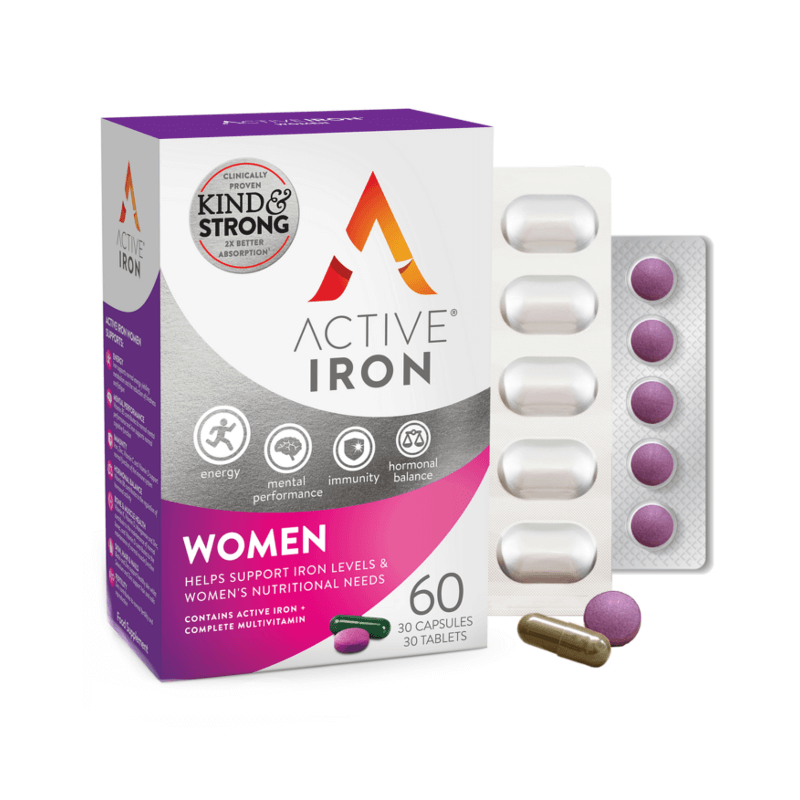Iron from Food.
Non-haem iron comes from plant-based sources, including fortified cereals and breads, rice, oats, nuts, beans, and leafy greens. Unfortunately, non-haem iron is also more difficult for the body to absorb, and so while a plant-based diet may provide ample non-haem iron to the body, an individual may still find themselves experiencing inadequate iron levels


Foods that Inhibit Iron Absorption.
A reduction in iron absorption can also be caused by phytates in whole-grains and legumes, or tannins in tea and coffee. As a result, many vegetarians find it difficult to meet their iron needs through diet alone, and may benefit from taking an iron supplement to replenish their iron stores.
Active Iron is different.
Most iron supplements dissolve in the stomach. This can lead to oxidation and gut inflammation, which can lead to common side effects associated with iron supplements, such as constipation and nausea. Active Iron is different. Its ground breaking whey protein formula targets the right place for absorption, the DMT-1. This helps reduce oxidation, thus protecting the gut from inflammation. As a result, Active Iron is highly absorbed compared to other iron supplements¹, making it gentle on the stomach and clinical results have shown that it increases iron levels by 94%².



Erica Bracken Shares her Experience with Active Iron.
As a vegetarian, Erica struggled to get sufficient iron from her diet.
If you have a restricted diet or struggle to get sufficient iron from your diet, Active Iron can help to support your iron and energy levels³.
Our Products.



Trusted by Experts & Loved by Consumers.








